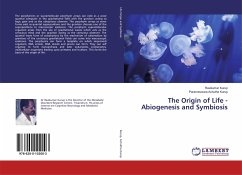Extracellular vesicles are lipid bilayer-delimited particles that are naturally released from endosymbiotic archaea and can regulate human cell and tissue functions as an alternate nervous system. The protozoans like entamoeba with its viral, archaeal and bacterial endosymbionts would have evolved into the multicellular organisms or metazoa. The archaeal, bacterial and protozoal extracellular vesicles containing RNA and DNA viroids can by horizontal gene transfer lead to evolution of metazoan, plants, animals and human species. The chimeric infective symbiotic tissue organism evolves as a consequence of global warming and the protozoal, bacterial, viral and archaeal symbiotic colonies are new forms of life.
Bitte wählen Sie Ihr Anliegen aus.
Rechnungen
Retourenschein anfordern
Bestellstatus
Storno








